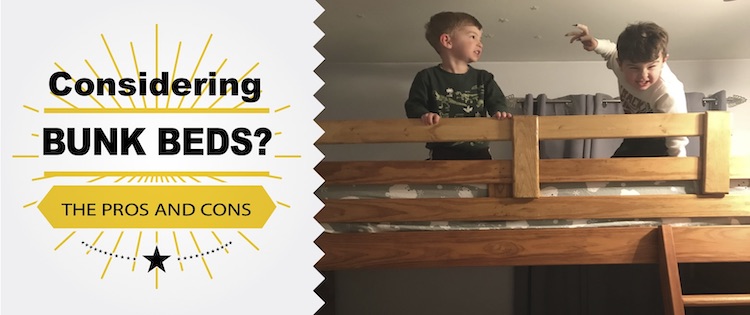Last Updated on November 20, 2020 by admin
Hi! This post contains affiliate links. If you click on them and end up buying things as a result, I could get a small commission at no cost to you. YAY
Have you found a toy at the store that your 2-year-old would love, only to discover a small warning labeling it a small-parts-wielding deathtrap?
It’s especially confusing when the toy doesn’t even seem to HAVE any small parts.
Take this toy vacuum cleaner, for example.
So, just how bad of parents are we if we go ahead and get our 2-year-olds that toy vacuum cleaner anyway? (Ahem: guilty)
Here’s what I found out when I looked into it.
The Law About Toys with Small Parts for Toddlers
The U.S. Consumer Product Safety Commission is in charge of this stuff. They have a whole section on their web site that tells businesses how to comply with the law, including a page dedicated to childrens’ products with small parts.
Here’s a summary:
- If a product is intended for kids under age 3, it’s not allowed to have any parts that can fit into a cylinder 2.25 inches long by 1.25 inches wide. The cylinder is meant to be about the same size as the throat of a child under age 3. Here’s what it looks like — you can even buy one to use at home.
- This rule may apply to the entire product, a piece of the product, or even a piece of the product when it’s broken. Manufacturers are supposed to run the product through a bunch of tests that replicate the “normal use and abuse” of children under age 3. If a piece breaks off during those tests, it could count as a small part.
- Products intended for kids age 3-6 are allowed to have small parts, but they are required to be labeled with the choking hazard warnings we see so often.
The Gray Area
Seems simple, right? No one wants people to be allowed to sell marbles to 1-year-olds.
But because I blog solely about toys for the kids who are the most likely to be interested in toys geared for 3+ without being 3+, I’ve noticed a gray area when it comes to these warnings.
Manufacturers don’t label consistently
I use Amazon enough to know exactly where to find the yellow choking hazard warnings that companies are supposed to add to product pages.
Over time, I’ve noticed toys without warnings that seemed extremely similar to toys WITH warnings. My suspicions that these products should have warnings were sometimes confirmed by product reviews that reported small parts being produced.
In another example from my own experience, this Thomas Wooden Railway Expansion pack has no “small parts” warning on Amazon or its official Fisher Price web page (although they do state that it’s intended for ages 3+). However, I noticed a warning on the packaging once it was delivered.
Toy stores may have their own policies about which toys they’ll stock, and consumers can report unsafe products and sue companies if things go wrong. Otherwise, the warnings posted are at the seller’s discretion — no government official is actively enforcing this labeling.
There’s some variation in how easily toys break.
Logic follows that some companies will be more conservative than others with their testing and warnings.
After all, some toys will break much more easily than others. In the case of the toy vacuum sweeper I mentioned above, I’m not sure how a 2-year-old could smash it in such a way to expose the tiny parts inside. It must have failed the small parts test somehow, but I felt like I would notice if my 2-year-old did enough damage to create one.
Same with these garden tools. They’ve seen a lot of abuse since my son got them for his first birthday. Three years later, the screws aren’t loose at all. That doesn’t mean they won’t ever come off, but it shows the variety in how toys are labeled.
Kids develop at different rates.
Some kids are way over “mouthing” by the time they’re 3. Others may not be. Age 3 is more of an estimate to let parents know when they can relax a little about these things, but you know best whether your kid is likely to want to put small things in their mouth. Err on the side of caution, of course.
Some toys are only dangerous when pre-assembled.
Some toys, such this toy kitchen, come disassembled and with bags of screws and knobs that are definitely choking hazards. If they’re put together correctly, those hazards may be reduced significantly if not completely. Manufacturers seem to still list the risk, though — sometimes adding a message like “adult assembly required.”
It’s frustrating that labels aren’t more specific about which part of the toy is hazardous or why it got the label.
Warnings Won’t Keep Your Kid Safe
Here’s the deal. Parents have to constantly watch their toddlers to make sure they don’t choke on anything, period.
Even without small parts from toys, we have to contend with potentially deadly coins, balloon fragments, cell batteries, and food (hot dogs, grapes, carrots, etc). My 1-year-old has to be repeatedly dragged away from a patch of very appetizing gravel whenever we’re in our backyard.
Not to mention that choking is just one of the many dangers we have to worry about — as you know, most tots would happily walk right off a cliff if we’re not vigilant.
It’s our job to keep tiny things out of our kids’ mouths, wherever they come from. Parenting — fun times, right?
I do my best to recommend the safest toys, but I can never guarantee complete safety.
I’ll leave you with this short, helpful video about how to save a choking baby. Godspeed!

